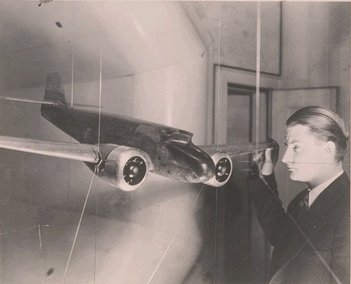
If it's a good idea here, why not in the cockpit of an aeroplane, right?
 Image source
Image source
The forward slope was designed to avoid reflection of lighted instruments in the window panes, but that turned out to create other reflections. From this site:
The cockpit windshield of the first 247s was angled "forward" instead of the conventional aft sweep. This was the design solution (similar to that adopted by other contemporary aircraft that used a forward raked windscreen) to the problem of lighted control panel instruments reflecting off the windshield at night, but it turned out that the forward-sloping windshield would reflect ground lights instead, especially during landings, and it also increased drag slightly.[12][13] By the introduction of the 247D, the windshield was sloped aft in the usual way, and the night-glare problem was resolved by installing an extension (the glarescreen) over the control panel.[14]
Also mentioned in this answer.





